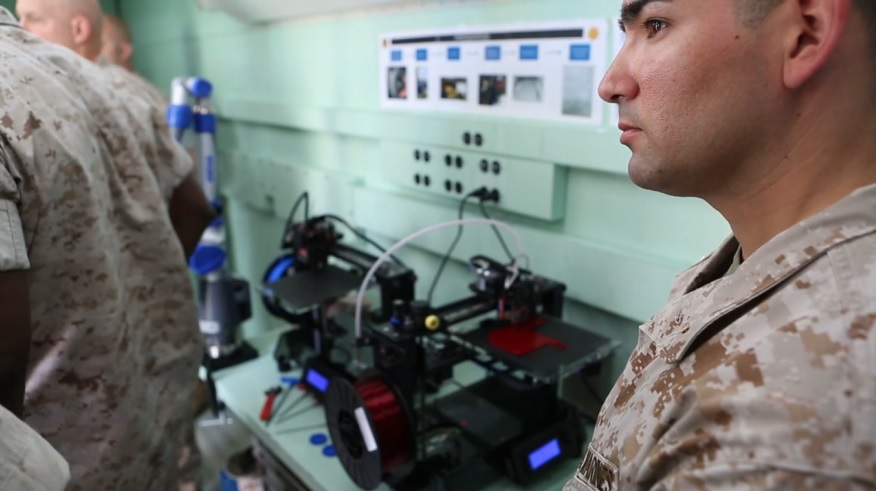What if, instead of waiting 60 days for new parts or equipment, you could have them available in just 1 day? This is the new reality for the West Coast Marines, who have started using 3D printing to replace broken gear.
3D printing company, Inventor Cloud, Applied Systems and Technology Transfer, have loaned the equipment to the California based unit at Camp Pendleton. Members of 1st Maintenance Battalion, Combat Logistics Regiment 15, 1st Marine Logistics Group who have been printing aircraft parts, gas caps, tools, radio brackets and more.
Lt. Col. Gregory Pace, commander of the battalion, has said that the implementation of 3D printing “has the potential to be revolutionary” on their demand for parts. Instead of lengthy wait times or having to source parts from other decommissioned machinery, Marines can quickly 3D print a prototype that can be matched to the needed repair, tested against fit, form and function, and then fabricated with metal.
The current focus is small plastic pieces common to communications gear, some parts of which break regularly. Instead of butchering other radios, the operators have found 3D printing to be an excellent solution.
The cost reduction is also significant. Fleet Readiness Center Southwest, an aviation repair shop based at Naval Station North Island, California, is home to three state-of-the-art 3-D printers. Old F/A-18A-D Hornet jets with bulkhead cracks can cost as much as $1 million and take six months to repair there, but with aluminium and 3D printing, the cost can be reduced to as little as $25,000.
Pace says the learning curve is no problem for the Marines in the maintenance battalion, with them learning how to use the scanning software and printing process in three days. They were printing parts within four hours once their system was online.
In addition to the Marine Corp being at the forefront of utilising this technology in the military, the US Navy has also jumped on board. They have used 3D printing to manufacture obsolete and expensive parts for missiles, lighter and less costly aircraft pieces, and helicopter components that cut down on labour hours.
While this won’t replace the military’s existing supply chains, it is an excellent alternative and addition to methods already in use.
“It is an exciting time and we are thrilled to be a part of it,” Pace said. “It is exciting to look at things with a fresh perspective and not the entered by existing orders and policies suggest you should do. You can’t have innovation if you are beholden to systems that were created years ago.”
While the military is still in the testing phase of 3D printing, they have already discovered limitless possibilities for the application of this technology.





